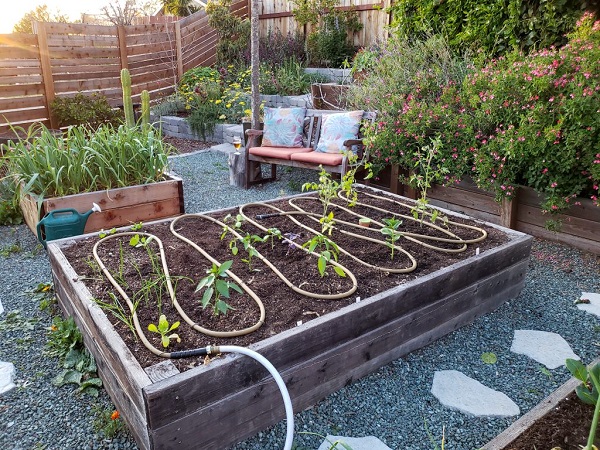No matter where you live, the conservation and wise use of water in our gardens and landscapes is important. Sustainable water use helps grow beautiful gardens while conserving water and helping reduce water pollution and stormwater overflows.

Amend the soil with compost or other organic matter to increase the soil’s ability to absorb and retain rain and irrigation water. More water is absorbed by the amended soil so less runs off your landscape and into the street. This means less fertilizer and pesticides wash into nearby storm sewers, rivers, and lakes.
Cover bare soil with a layer of organic mulch. It conserves moisture so you water less, prevents erosion and helps suppress weeds. As the mulch decomposes, it improves the soil by adding organic matter and nutrients.
Use rain barrels to capture rainwater that drains off the roof. Purchase a rain barrel or make your own from a recycled food grade container. Evaluate the functional design, appearance and space needed when making your selection. Use the rainwater for watering gardens and containers. Start with a call to your local municipality as some have restrictions on water harvesting, while others encourage this practice and even offer rebates.
Use drip irrigation or soaker hoses for applying water right to the soil where it is needed. You’ll lose less water to evaporation and overspray. Avoiding overhead watering helps reduces the risk of disease. Irrigation systems also reduce your time spent watering and are especially helpful for container gardens and raised beds.
Plant native plants suited to your growing conditions and landscape design whenever possible. These deeply rooted plants help keep rainwater where it falls, reducing the risk of basement flooding and overwhelming storm sewers. The plants slow the flow of water, helping keep it on your landscape for the plants to use. Their deep roots create pathways for rainwater to enter and travel through the soil. Plant roots and soil help remove impurities from the water before it enters the groundwater and aquifers.
When adding walks, patios or other hard surfaces to your landscape consider enlisting permeable options. Permeable pavers allow water to infiltrate the surface rather than run off into the street and storm sewer.
Steppingstones placed in mulched pathways or surrounded by groundcovers make an attractive walkway or patio. Plant groundcovers suited to the growing conditions and those that tolerate foot traffic. The planted spaces between the hard surfaces allow water to move into and through the soil.
Implementing just a few of these changes in your landscape design and water management can help increase your landscape’s sustainability while reducing your workload.
Melinda Myers has written more than 20 gardening books, including Small Space Gardening. She hosts the “How to Grow Anything” DVD series and the Melinda’s Garden Moment TV & radio segments. Her website is MelindaMyers.com.
Related Articles & Free Email Newsletter Sign-Up
Caring for and Dividing Ornamental Grasses



Comment here